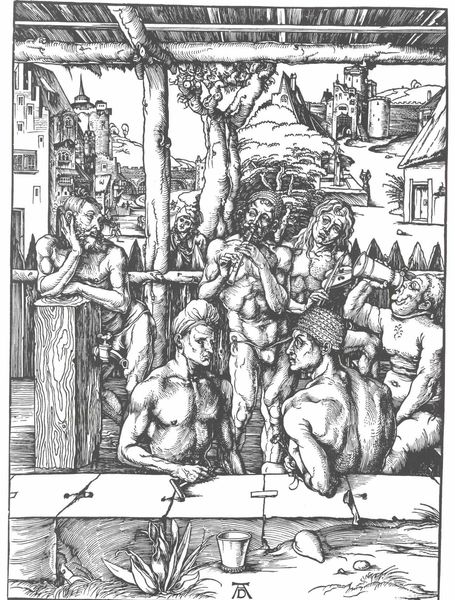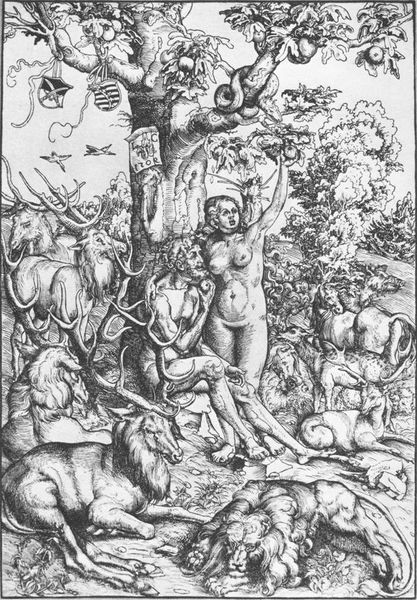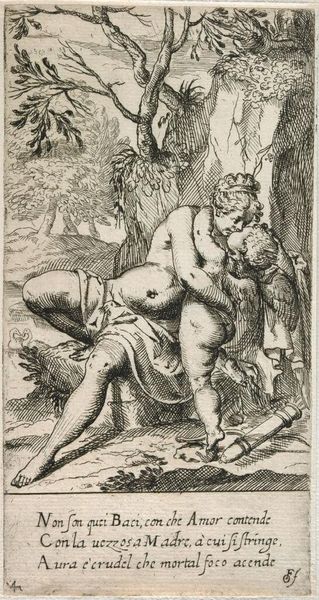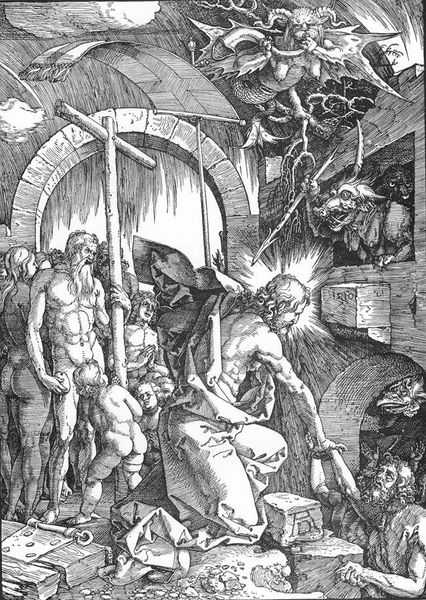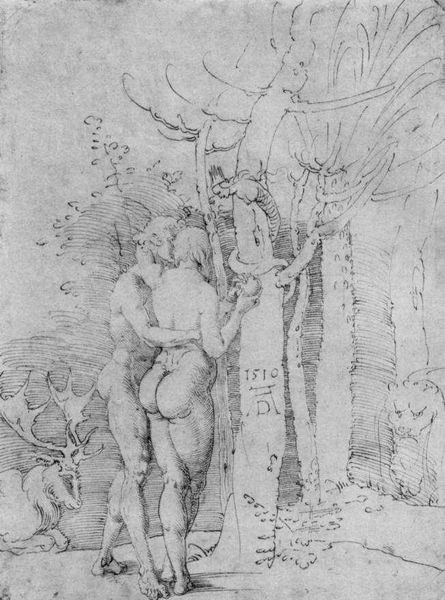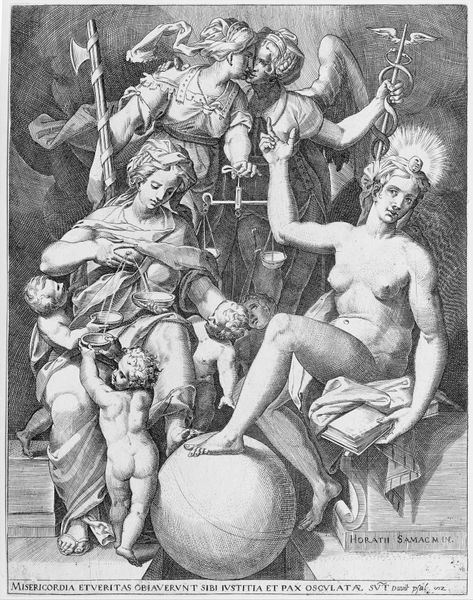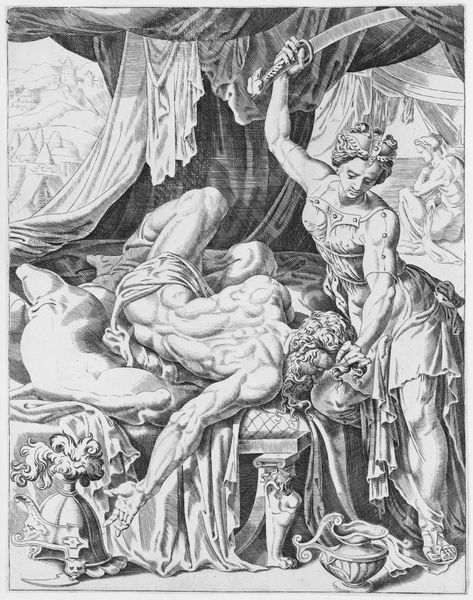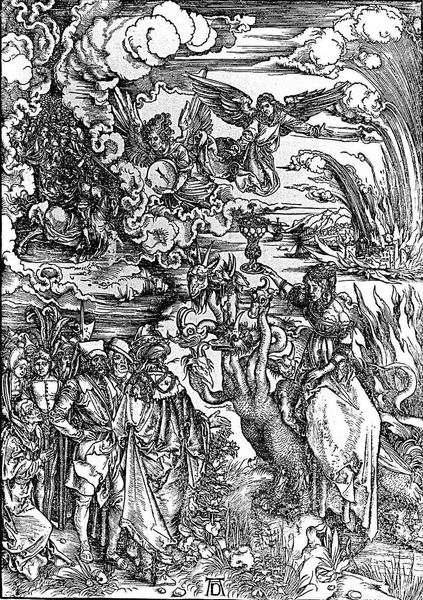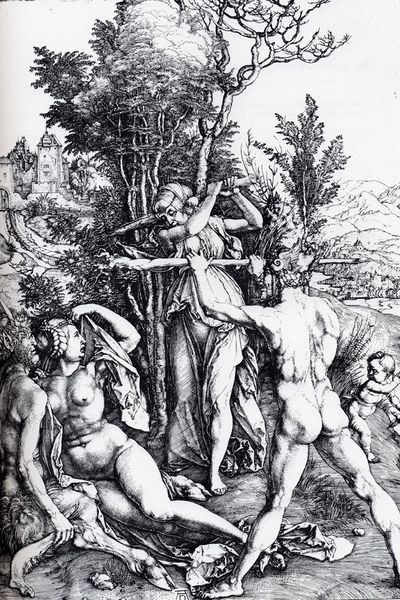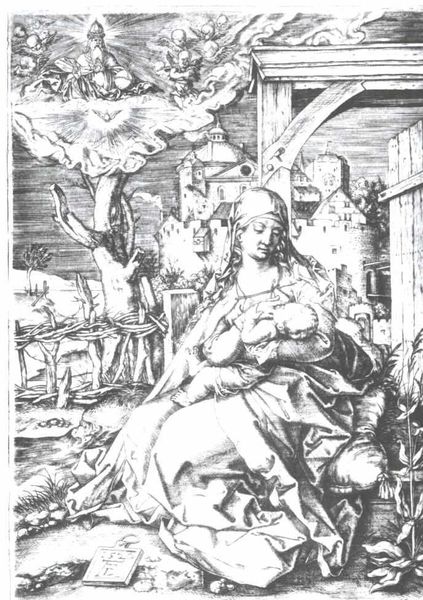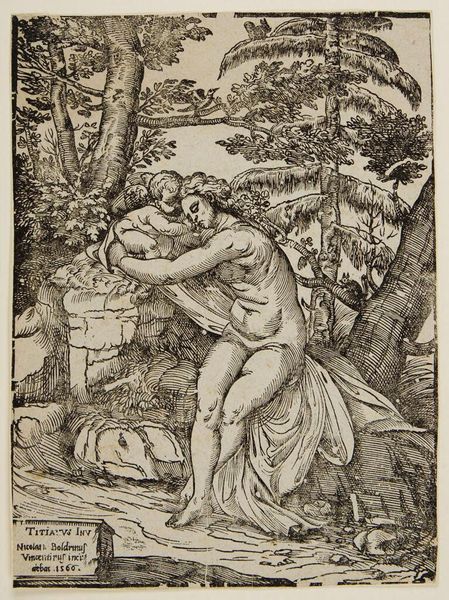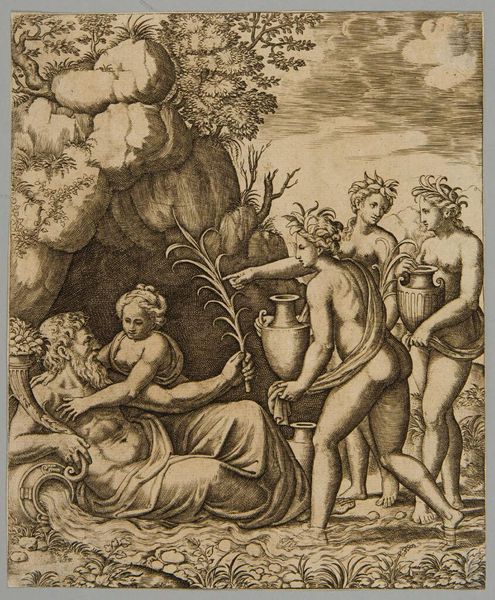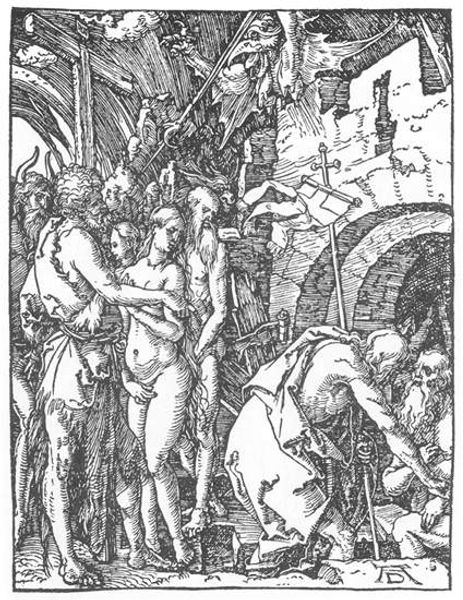
drawing, print, woodcut, pen
#
tree
#
drawing
#
allegory
# print
#
pen illustration
#
figuration
#
11_renaissance
#
female-nude
#
woodcut
#
pen work
#
pen
#
history-painting
#
northern-renaissance
#
nude
#
sitting
#
erotic-art
Copyright: Public domain
Editor: This is Hans Baldung's "Aristotle and Phyllis," created in 1513. It's a woodcut print, and I find the composition incredibly… bizarre. Phyllis is riding Aristotle like a horse! What exactly is going on here? How do you interpret this work? Curator: Baldung's print is indeed striking. It’s rooted in a popular medieval allegory. At face value, it warns of female wiles, depicting the philosopher Aristotle, a symbol of intellect and reason, humiliated and ridden by Phyllis, a woman representing the power of lust and seduction. However, let’s look deeper into how Baldung frames gender and power. Editor: So it's a cautionary tale? Curator: Precisely. But cautionary tales are rarely neutral. In this image, how are established hierarchies upended, and what does this tell us about Renaissance anxieties around gender roles and female agency? Note that this image circulated widely thanks to printmaking! Editor: That's fascinating. The mass reproduction adds another layer. Was Baldung endorsing or critiquing this view of women? Curator: That's a complex question. While the image reinforces stereotypes, it also gives Phyllis a powerful position. Considering the social structures of the time, Baldung might have been sparking debate, not just stating a fact. Remember, interrogating such art helps us to expose ingrained cultural biases. Does this give you any new insight? Editor: Absolutely. Seeing it as part of a broader social commentary about gender roles makes me reconsider the entire image. It is an active statement more than a moral lesson! Curator: Exactly! Understanding these complex and intersecting histories adds much value to the image.
Comments
No comments
Be the first to comment and join the conversation on the ultimate creative platform.
